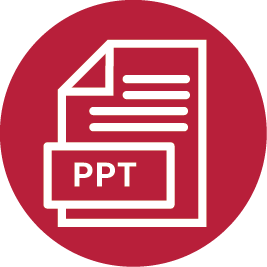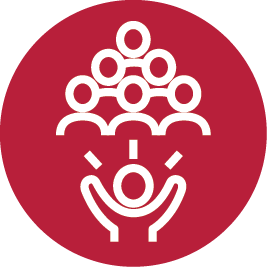
Drivers of Primary Healthcare and Elementary Education Initiatives in Karnataka (2014–2024)
DOWNLOADS
Executive Summary
This study examines the drivers of state-level initiatives in primary healthcare and elementary education in Karnataka, focusing on urban areas over the decade from 2014 to 2024.
Karnataka is often praised in nationally prominent indices as a progressive state with strong fiscal, health, and education indicators. However, our analysis questions this categorisation, suggesting that Karnataka’s good performance is limited to certain indicators, where it is only marginally better than the national average. In many other health and education indicators, such as out-of-pocket expenditure and learning levels, Karnataka’s performance is sluggish. The state exhibits stark intra-state disparities, and the uptake of public health and education facilities compared to private ones is poor. Despite historically undertaking prominent initiatives, Karnataka is not a national leader in health and education. It possesses a strong financial resource base, with one of the highest Per Capita Income (PCIs) in India, and an active, skilled civil society. We analyse the drivers of state-level initiatives to understand why Karnataka has not become a national leader with high uptake and quality of primary health and elementary education in urban areas. Our focus is on initiatives funded or ideated by the state during 2014–2024, specifically those addressing elementary education and primary care as a whole.
Our study addresses the following questions: (a) What have been the key initiatives in primary health and elementary education? (b) What policy challenges do they focus on, and how do these challenges relate to the everyday functioning of elementary schools and Primary Health Centres (PHCs)? (c) What drivers led to these initiatives? Understanding the current policy initiatives and their drivers will highlight the nature of the government’s focus on health and education and the types of challenges that have been prioritised.
We also argue that, while the policy focus on strengthening both elementary education and primary healthcare systems in Karnataka has been weak, primary health has comparatively received less attention. Our study found that new initiatives in elementary education include the Karnataka Public School (KPS) and the State Education Policy Commission (SEPC), both of which are either funded and/or ideated by the state. In primary health, the initiatives are Namma clinics and Ayushmati clinics, funded by central funds from the 15th Finance Commission.
These initiatives focus on the challenge of declining uptake of facilities in health and education. We describe these as the “big” challenges, as they define the rationale of state-level policy initiatives. Another set of challenges, such as infrastructural weaknesses and unequal distribution of staff, which are critical for enhancing the uptake of facilities, are also present. We refer to these as “small” challenges, as they are not the focus of state-level initiatives.
We argue that there is a mismatch between (a) the types of problems on which the initiatives focus and those that are central to the issue of low uptake, and (b) the solutions proposed to address the challenges and those that will be effective.
State-level initiatives in both primary health and elementary education are led by state-level bureaucracy and political leadership. These initiatives result from a policy push from the central government and the Local Policy Context. We find that all new state-level policy initiatives respond to a “Local Policy Context.” This differs from the local context, which is defined by caste, community, political affiliation, economic, and epidemiological factors. The Local Policy Context refers to those attributes that must be considered for new initiatives to emerge. For example, one of the local contexts of Belgaum city in Karnataka is its high migrant population in urban areas due to a strong presence of local industries. However, this alone is insufficient to drive state-level policy initiatives. The policy initiatives are driven by the conditions present in the Local Policy Context. We identified four such conditions, and all the initiatives we investigated and discuss in this report meet these conditions. We also argue that new initiatives must fulfil the conditions of the Local Policy Context.
State initiatives primarily address challenges that are widely recognised by stakeholders within the school system, although these may not be the most critical issues affecting low uptake. Stakeholders include school users, administrators, and engaged citizens. An example of such a challenge is the absence of English as the medium of instruction in government schools, as opposed to focusing on teacher training. Secondly, initiatives must offer solutions that are visible and comprehensible to ordinary residents. For instance, initiatives that establish new neighbourhood clinics are more likely to materialise than those involving the mapping of vulnerable populations to better locate new health facilities. Thirdly, new initiatives should be beneficial to local politicians. Lastly, these initiatives should not entail additional financial implications. Other pathways and stakeholders in Karnataka have been less prominent in driving state-level initiatives over the past decade. These include internal bureaucratic processes, advocacy by civil society and professional bodies, expert bodies, commissions, legal rulings, and social movements.
We argue that Karnataka requires new types of state-level initiatives. To this end, we propose three recommendations to transform the local policy context and one for introducing additional pathways from which new initiatives can emerge.
Firstly, PHCs and schools must be valuable to the tax-paying middle classes, who can demand better services, not just the poor. We suggest that the state government should create a “diversity index.” This index would measure the uptake of PHCs and schools among both the poorest and the well-to-do within the facility’s catchment area. To enhance uptake among the middle classes, the administration will need to implement quality improvement measures in health and education facilities. Diversity rankings would be utilised by civil society bodies and engaged citizens to demand better public services.
Second, another aspect of the local policy context that requires transformation is the inability to increase funding for health and education. This necessitates strengthening the economic rationale for increased public investment. In the current policy context, the role of health and education acknowledged in the growth narrative is limited to enhancing productivity through a skilled and healthy population. However, this does not convincingly argue why public facilities should undertake this role. To address this, a government-commissioned study should quantify the cost implications when households privately fund health and education and demonstrate how reduced income for consumption and savings, along with increased inequality, impedes the creation of a high-growth state. The study must be commissioned by a high-level government body to lend it greater legitimacy and enhance its value for public mobilisation. The findings should be actively disseminated through national and local media, as well as through the activities of engaged civil society organisations.
Third, the local policy context should ensure political ownership of the quality of health and education facilities. This requires the emergence of constituencies that demand quality health and education, which can, in turn, benefit political leaders during and outside elections. One approach is for state departments to create constituency-wise profiles of the state of health and education facilities, along with detailed plans for improving performance. Civil society organisations, academic institutions, writers, and local party workers can assist the state government in developing this index and in fostering political mobilisation around the constituencies.
Lastly, policy initiatives need to strengthen non-bureaucratic channels for developing new initiatives. We make two recommendations. First, instead of ad hoc committees and expert commissions, we recommend the establishment of state-level advisory bodies in education and health, which have the authority to conduct independent examinations and prioritise issues affecting primary health and education, proposing new initiatives. Second, recommendations for strengthening health and education made by various expert bodies, consultations, and commissions in Karnataka need to be publicly endorsed by political leaders. It is important that political campaigns acknowledge and respond to these recommendations, even if they disagree. Doing so would create support groups around solutions to key primary health and education problems and ensure that political leadership takes ownership of them.
We employed qualitative methods in this study, conducting key informant interviews and reviewing government reports (Economic Survey, PAB minutes, National Health Mission [NHM] ROP) and policy documents (state-level task force reports, Comptroller and Auditor General (CAG) Reports, Finance Commission Reports). Our analysis was conducted at three levels: state, selected districts, and sub-district, i.e., taluka and school/PHC. The study districts included one district in North Karnataka and another in South Karnataka, each with a prominent urban centre under a municipal corporation. Key informants included state, district, and frontline-level health and education bureaucrats, civil society leaders, academics, policy researchers, journalists, engaged citizens, and ordinary users of health and education facilities.
This report is divided into four sections. In Section 1, we discuss Karnataka’s social and economic indicators and its underperformance in health and education. In Section 2, we outline the questions this study addresses and argue for a focus on primary health and elementary education in urban areas. Section 3, “The Methods,” details the key methods used in this study, the study sites, and the analytical framework. In Section 4, “The Insights,” we present the main findings of this study. In the last Section, “The Implications,” we synthesise the arguments and discuss their implications for policymaking in health and education in Karnataka, offering policy recommendations.
Q&A with author
What is the core message conveyed in your paper?
Karnataka, while presented as a socially progressive state, actually faces significant challenges in primary health and elementary education in urban areas in both access and outcomes. Policy attention to health and education needs to increase. Karnataka’s budget for health and education is lower than the average budget allocations across India. State-level and funded initiatives which aim to improve all urban primary health care facilities and elementary education providing schools are very limited, with primary health getting much lesser attention. Key initiatives undertaken in the decade of 2014-2024 have emerged from a policy push from the central government and the pressures of a Local Policy Context. Due to the Local Policy Context, initiatives which have emerged so far have tended to be ones which a) don’t require additional funding and are visible and understandable to ordinary users of schools and primary care centres, so somewhat populist in nature; b) focus on health and education challenges which are not contentious or structural; and c) are useful to local political leaders particularly in electoral settings.
What presents the biggest opportunity?
Karnataka can truly become a global leader in the public provision of health and education with a high uptake of schools and primary care centres by all strata of society, not just the poorest of the poor. For this the Local Policy Context needs to change in such a way that new kinds of initiatives can emerge. Such changes will happen when various stakeholders in the policymaking space, political actors, frontline bureaucracy, civil society leaders and policy consumers, such as ordinary users of schools and health facilities, demand it during and outside of elections. A few things can be done to enable these stakeholders to demand these changes. First, we need data on health and education outcomes available as per constituency and not district. Second, government provision of good schools and primary care centres need to be made ‘public’ in nature, not an option of the last resort for the poorest of the poor. A constituency-wise ‘diversity index’ needs to be created by the state in which schools and primary care facilities are ranked by the extent to which the middle classes and the non-poor are using them. Third, a case needs to be made that government provided high quality schools and education are not just important to increase economic productivity through a better qualified and healthier population but also for economic growth. The less people spend on expensive private schools and medical care, the more money they will have for consumption and saving and the more the economy can grow. For this, a government appointed commission needs to highlight in stark numerical terms, how much the economy loses when individual households pay private players for schooling and healthcare.
What is the biggest challenge?
Convincing the state-level decision makers, i.e. the senior bureaucrats and political leaders, on the one hand and the ordinary citizens on the other, that it is worth pushing for publicly funded health and education. We are living in times of aspirational ideas of welfare and economy. It is important to remember that strong institutions rooted in equity do not just benefit the poor, but every section of the society.
Find on this page

The Centre for Social and Economic Progress (CSEP) is an independent, public policy think tank with a mandate to conduct research and analysis on critical issues facing India and the world and help shape policies that advance sustainable growth and development.








